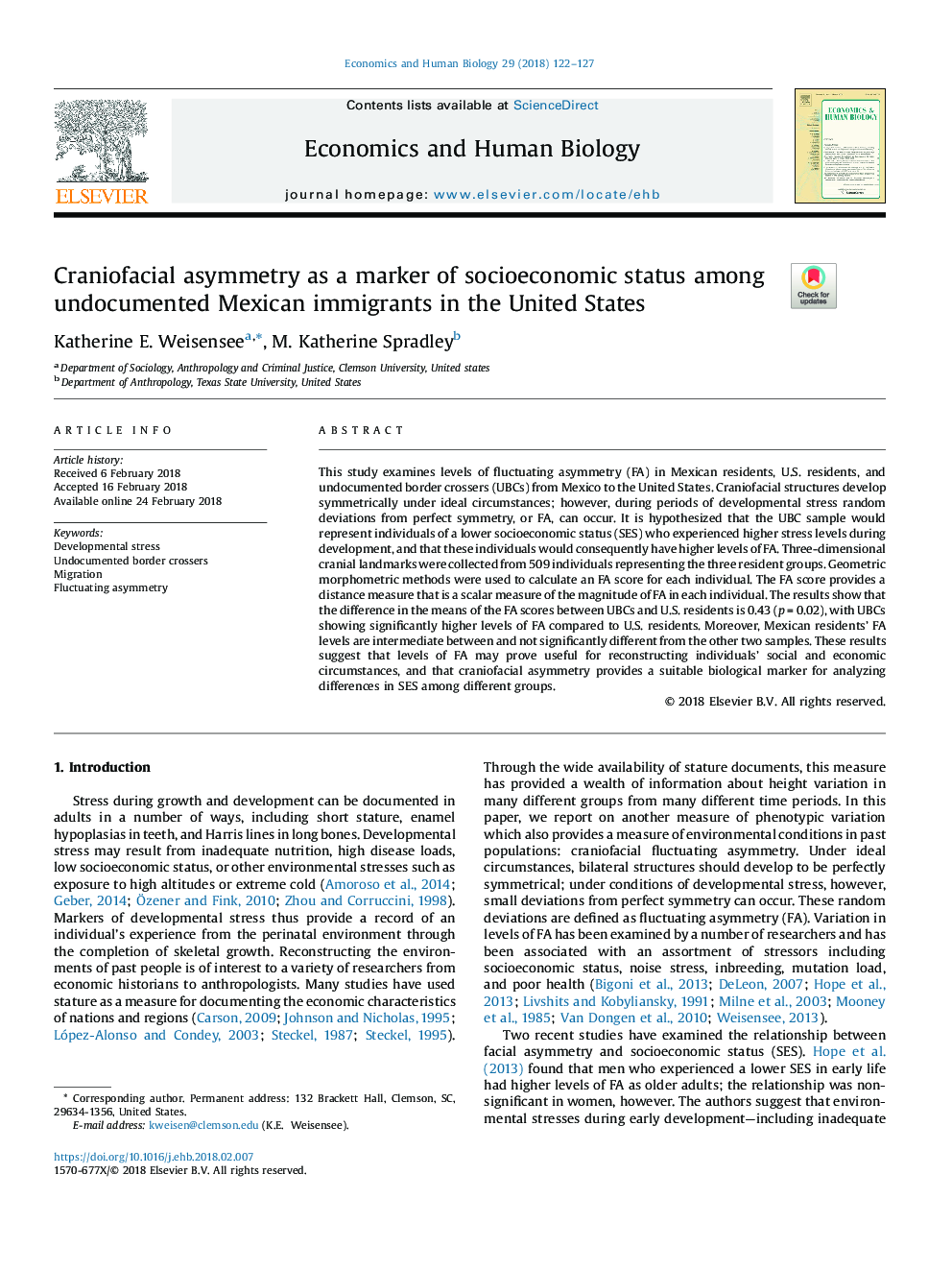| Article ID | Journal | Published Year | Pages | File Type |
|---|---|---|---|---|
| 7348202 | Economics & Human Biology | 2018 | 6 Pages |
Abstract
This study examines levels of fluctuating asymmetry (FA) in Mexican residents, U.S. residents, and undocumented border crossers (UBCs) from Mexico to the United States. Craniofacial structures develop symmetrically under ideal circumstances; however, during periods of developmental stress random deviations from perfect symmetry, or FA, can occur. It is hypothesized that the UBC sample would represent individuals of a lower socioeconomic status (SES) who experienced higher stress levels during development, and that these individuals would consequently have higher levels of FA. Three-dimensional cranial landmarks were collected from 509 individuals representing the three resident groups. Geometric morphometric methods were used to calculate an FA score for each individual. The FA score provides a distance measure that is a scalar measure of the magnitude of FA in each individual. The results show that the difference in the means of the FA scores between UBCs and U.S. residents is 0.43 (pâ¯=â¯0.02), with UBCs showing significantly higher levels of FA compared to U.S. residents. Moreover, Mexican residents' FA levels are intermediate between and not significantly different from the other two samples. These results suggest that levels of FA may prove useful for reconstructing individuals' social and economic circumstances, and that craniofacial asymmetry provides a suitable biological marker for analyzing differences in SES among different groups.
Related Topics
Life Sciences
Agricultural and Biological Sciences
Agricultural and Biological Sciences (General)
Authors
Katherine E. Weisensee, M. Katherine Spradley,
